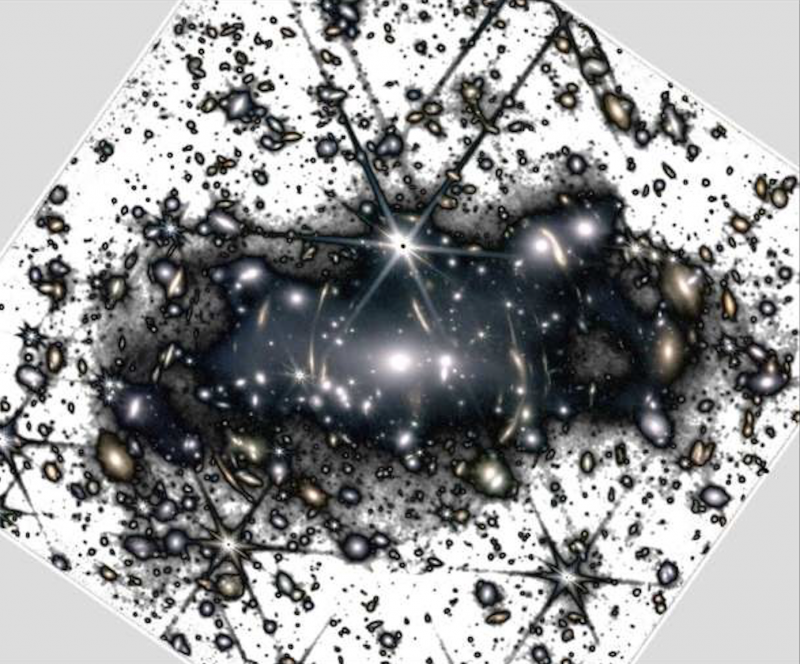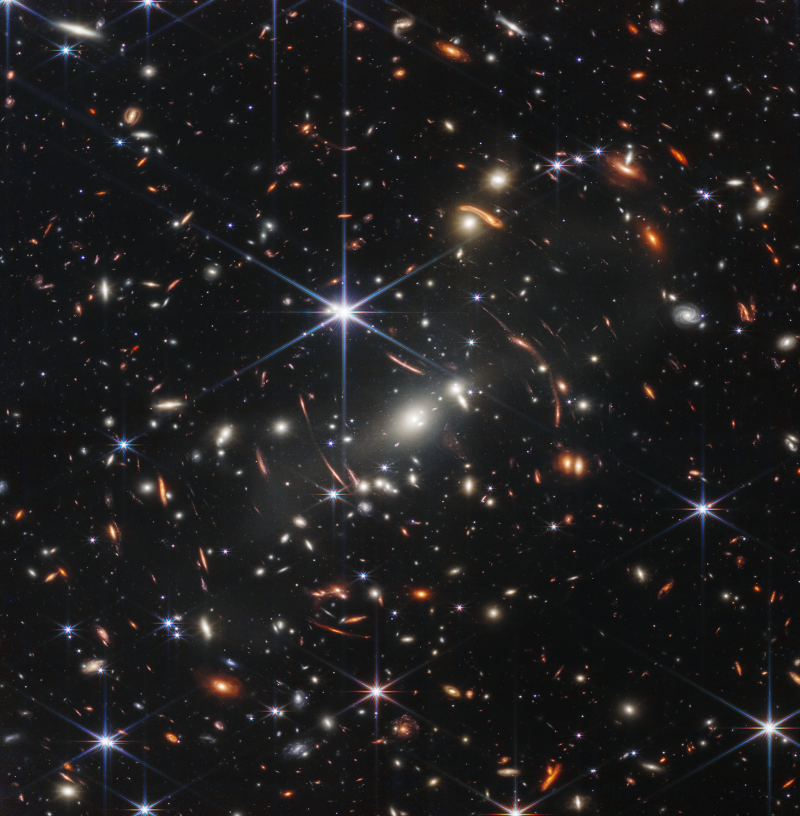
The ghostly light in galaxy clusters
The Instituto de Astrofísica de Canarias in the Canary Islands, Spain, said this month (December 2, 2022), that it has finished the most complete analysis to date of the ghostly light in distant galaxy clusters. Astronomers call it intracluster light, that is, light between the galaxies. These astronomers said:
In galaxy clusters, there is a fraction of stars that wander in intergalactic space because they are torn off by enormous tidal forces that are generated between the different galaxies in the cluster. The glow from these stars is called intracluster light (ICL). And it is extremely faint, only 1% or less of the brightness of the darkest sky that can be observed from Earth.
Seeing better from space
The extreme faintness of this light is one reason that space telescopes are so useful. Above the obscuring light of Earth’s atmosphere, telescopes such as the James Webb Space Telescope – placed in orbit at Lagrange point 2 earlier this year and now only beginning its scientific studies – can, for the first time, enable astronomers to study this ghostly light. They said the Webb’s ability to “see” the universe in the infrared lets it gather information farther away from the center of a galaxy cluster than was previously possible using optical telescopes.
Astronomers Mireia Montes and Ignacio Trujillo – both of the Instituto de Astrofísica de Canarias – have been able to explore the intracluster light of a particular galaxy cluster in unprecedented detail. The cluster, designated SMACS-J0723.3-7327, is 4 billion light-years away, located in the sky visible from Earth’s Southern Hemisphere in the direction of the constellation Volans the Flying Fish.
The astronomers said Webb images of the center of this cluster are twice as deep as previous images from the Hubble Space Telescope. And they commented:
In this study we demonstrate the great potential of the Webb to be able to observe something so weak. This will allow us to study galaxy clusters further away and in much more detail.
The astronomers said their work provides new insights into the formation processes of galaxy clusters and the properties of dark matter.
The peer-reviewed Astrophysical Journal Letters published this new study on December 1.
What they can learn
Even using the Webb Telelescope, studying the faint intracluster light within a distant galaxy cluster wasn’t easy. The researchers said they had to develop new analysis techniques in order to analyze this extremely weak, ghostly light. But it was worth it, they said, because the analysis will enable them to study and understand the processes involved in the formation of structures as massive as galaxy clusters. Montes said:
By analyzing this diffuse light, we found that the inner parts of the cluster are being formed by a merger of massive galaxies. Meanwhile, the outer parts are due to the accretion of galaxies similar to our Milky Way.
So the work gives astronomers new clues about how galaxy clusters formed. And it also provides insights on the properties of a mysterious component of our universe: dark matter. The stars that emit the intracluster light follow the gravitational field of the cluster, which is excellent for tracing the distribution of dark matter, these astronomers said. Trujillo commented:
The JWST will allow us to characterize with unprecedented precision the distribution of dark matter in these gigantic structures and shed light on their ultimate nature.

Bottom line: In a new study, the James Webb Space Telescope has revealed “intracluster light,” the light of stars wandering in intergalactic space, ripped from galaxy clusters by enormous tidal forces.











